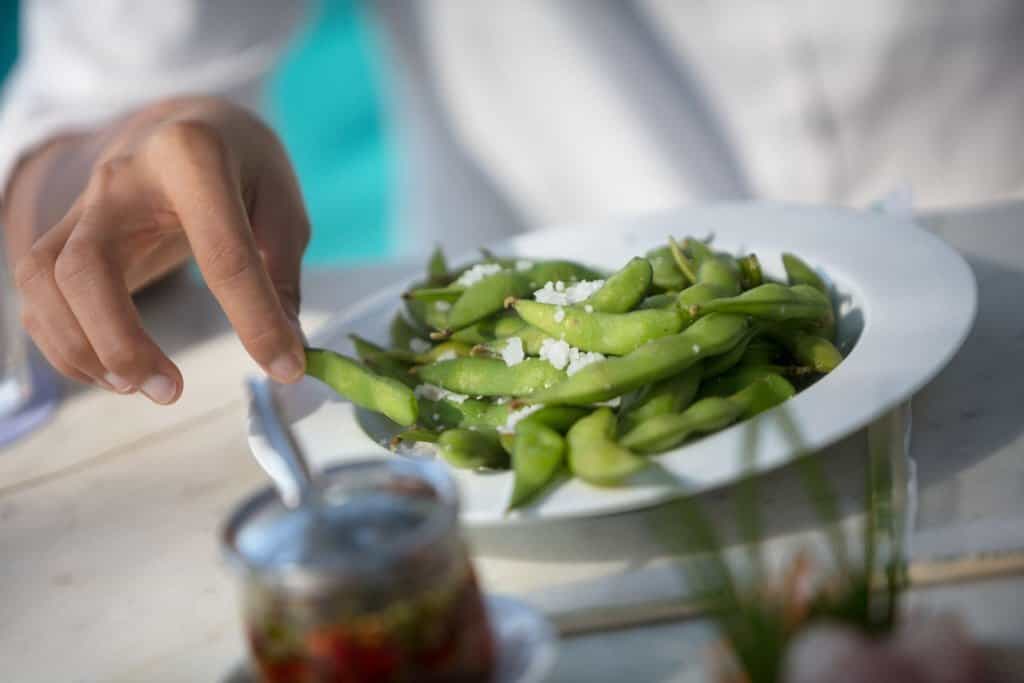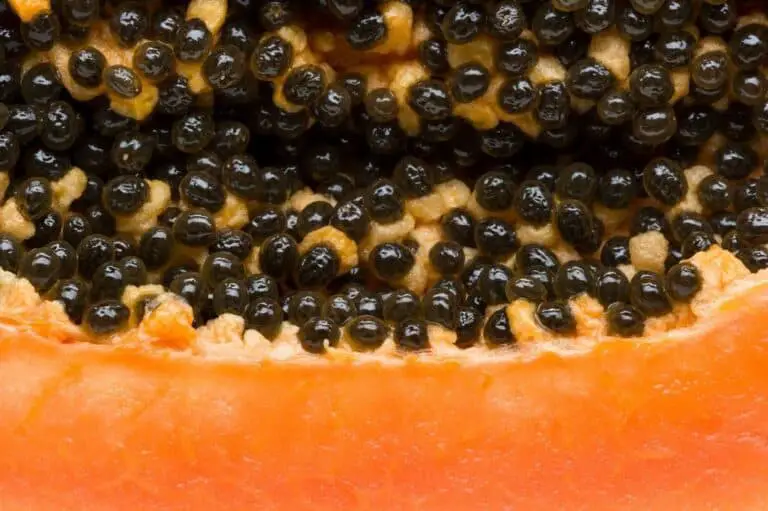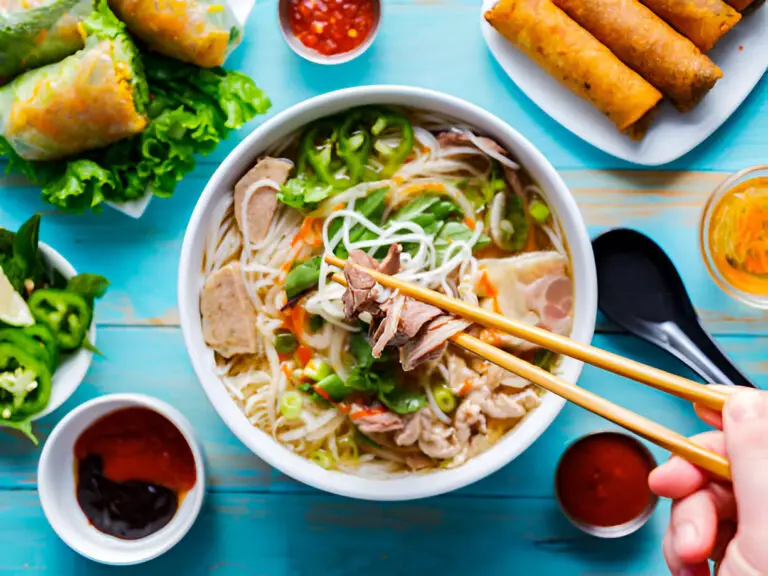Are Raw Green Beans Good for You? Benefits of Eating Raw Green Beans

Raw green beans are a versatile ingredient that can be used in many different dishes. They are known by numerous names, with snap beans and string beans being two of the more common.
They can be added to salads, stir-fries, or simply eaten as a snack. Raw green beans are also a good source of fiber, which is important for maintaining a healthy digestive system.
If you’re looking for a nutritious and tasty way to add more vegetables to your diet, try raw green beans. You’ll be surprised at how easy they are to incorporate into your meals and how much you’ll enjoy their fresh flavor.
So, is eating raw green beans good for you? Yes, eating raw green beans actually has many benefits for your health. Raw green beans are a source of vitamins A and C, as well as fiber. They also contain chlorophyll, which has been shown to have numerous health benefits.
You can eat green beans raw, but weighing the pros and cons, it’s probably better to cook them. Eating raw green beans, also known as string beans, may cause some indigestion but is unlikely to result in a severe reaction like diarrhea and/or vomiting.
Most green beans have a low lectin count compared to other legumes. When you cook green beans, there will be some loss of nutrients, but that is outweighed by better absorption of the minerals that are present and making the risk of indigestion due to lectins present slim to none.
If you enjoy eating raw green beans, you are safe to keep doing so. If you’ve never eaten raw green beans and want to, then go for it. The indigestion that may occur is a result of the lectins in the green beans, but it most likely won’t be severe.
The Science Behind It

Green beans are much lower in toxins than other legumes like kidney beans and lima beans. The toxins that are present are concentrated in the seed and not the pod so choose immature green beans with small seeds to eat raw.
Green beans contain phytic acid and a protein called lectin. Both lectin and phytic acid are anti-nutrients. Anti-nutrients are plant or synthetic compounds that reduce the body’s absorption of minerals. Phytic acid binds with minerals like zinc, calcium, magnesium, and iron and prevents absorption. They exit the body with no benefit to us.
Lectins provide a natural defense for plants to any animal or insect that would otherwise enjoy eating them. In fact, lectins have been successfully introduced into the genes of wheat, rice, potatoes, and tobacco plants for the purpose of repelling insects.
Lectins do not dissolve in digestive enzymes and bind to the surface of cells in the gut. For humans, lectins can do damage to intestinal cell walls and good gut bacteria.
The body may react to this outside threat by emptying the intestines completely through diarrhea and/or vomiting. Other more common symptoms of indigestion include nausea, bloating, and gas.
The most famous of these lectins is gluten. The lectin found in green beans and legumes is phytohaemagglutinin (PHA). Most of the PHA is removed after cooking. Raw kidney beans, for example, have anywhere from 20,000 to 70,000 HAU’s (hemagglutinating units) raw and around 200-400 after being fully cooked.
The level of lectins is not nearly as high in green beans as it is in other beans like kidney beans and lima beans. Eating undercooked beans that are high in lectins can result in raw green bean food poisoning.
Usually, a severe reaction will include diarrhea and vomiting, but the symptoms will subside in a few hours. A trip to the hospital may be advisable with severe symptoms, and an IV with fluids can aid recovery time.
Kidney beans and lima beans need to be soaked for at least a few hours and then drained and boiled in fresh water. The soaking time combined with 10 minutes of cooking in boiling water should be sufficient to hugely reduce the lectin content.
Most of the lectins are found in the seeds of the green bean rather than the pods. Here’s a scientific study that shows in table 3 the amount of lectins found in 7 different cultivars of green beans.
The ranges of lectin that are in a green bean seed can vary drastically from 5-1,100 mg per 100 grams. Most varieties included are around 100 mg per 100 grams of seeds.
Phytic acid measures around.15 grams in uncooked green beans and.05 grams in cooked green beans. To further complicate things, some people are sensitive to lectins and phytic acid and some aren’t.
Green Bean Nutrition Facts
Green beans are a nutrient-dense food, providing a good source of various vitamins, minerals, and antioxidants. One cup (125 grams) of fresh green beans contains:
Raw green beans also contain small amounts of calcium, iron, folate, magnesium, phosphorus, and potassium. Green beans are low in calories and contain no fat. They are a good source of dietary fiber and several vitamins and minerals.
Are Green Beans Poisonous?

Green beans are mildly toxic. This is not a big deal as most foods contain some toxins and some of those are actually beneficial to us. Caffeine is a toxin that some plants produce. Unfortunately for them, it’s a toxin humans love. Green beans are one of the least poisonous beans around. Raw lima beans actually contain cyanide.
Green beans have mild doses of toxins and should be fine to eat raw. They are safe to eat, but probably shouldn’t be made a staple of a raw food diet. The highest concentration of toxins is located in the seeds and not the pods, so if you are picking raw beans for a salad look for young beans with small seeds.
Can Raw Green Beans Make Me Sick?
As with any uncooked food, there are certain risks associated with eating green beans raw. The biggest concern is lectin, a protein found in plants that can cause digestive issues if not properly cooked.
While most people can eat raw green beans without any problems, those with sensitive stomachs or digestive disorders may want to avoid them.
There are also some potential toxins in raw green beans that can be harmful if consumed in large quantities.
INFO
Overall, the risks of eating green beans raw are relatively low, but it is always best to consult with your doctor or dietitian before adding any new food to your diet.
Try Them Out
You may have heard of people going on a gluten free diet because of a gut problem like leaky gut syndrome or Crohn’s disease. Sometimes people eliminate all foods with lectins while trying to improve these problems or other autoimmune diseases. If you have regular gut or digestive troubles, lectins may be a source of gut problems for you.
An elimination diet is one way to tell if lectins are the source of your digestive troubles. This is done by eating a very plain diet without any of the foods that you think you may be sensitive to. Then foods are gradually introduced back into the diet, and in this way, you can tell what foods cause you problems.
Another option is to take a food sensitivity test. This is supposed to tell you what foods cause the most distress to your system. The accuracy of these tests is questionable, with test results varying from day to day.
Because of people’s different sensitivity levels to lectins and the wide range of amounts of lectins that can be present in different varieties of green beans, the best way to know if raw green beans bother you is to try them out.
Is It Better To Eat Green Beans Raw or Cooked?
Canned beans are pre-cooked and safe to eat directly out of the can without worrying about lectins. Frozen green beans will lose vitamins if thawed before cooking, so take them straight from the freezer onto the stove.
Cooking green beans causes around a 30% drop in vitamin C, potassium, iron, and magnesium but will have the same levels of B-vitamins and vitamins A and E as eating raw green beans. Nutrient absorption is also diminished when green beans are eaten raw because of lectins and phytic acids present in the raw form acting as anti-nutrients.
There is a study that shows that anti-oxidant levels increase when green beans are cooked. Anti-oxidants take out free radicals that can cause havoc on healthy cells. Another study shows that cooking green beans increases carotenoids β-carotene, lutein and zeaxanthin. Carotenoids are fat soluble vitamins that have been shown to have cancer reducing properties. They are also responsible for the pink color of flamingos.
Because cooking green beans gets rid of lectins that are responsible for indigestability and discomfort in some people, it makes sense to cook green beans. Eating green beans raw may give a slight nutritional content increase, but this edge in nutritional content may be awash because of the indigestibility of the raw form of green bean. Also, green beans cooked have been shown to have increased anti-oxidants and carotenoids.
The Good Health Benefits of Eating Raw Green Beans
Potentially Reduce Heart Diseases
Green beans are not only delicious but also nutritious. They are a good source of vitamins K and C, manganese, dietary fiber, and copper. Green beans also contain phytonutrients that can have various health benefits. For example, kaempferol is a flavonoid found in green beans that has been shown to reduce the risk of heart disease.
There is some evidence to suggest that green beans can help reduce the risk of heart disease. One study found that kaempferol, a flavonoid found in green beans, was associated with a lower risk of coronary heart disease.
Another study found that people who ate the most dark green and yellow vegetables had a lower risk of dying from cardiovascular disease than those who ate the least.
Good to Manage Diabetes
Green beans are one of the healthiest vegetables. They are low in calories and fat, and a good source of fiber and vitamins.
But that’s not all – green beans are also good for managing diabetes. In one study, participants who ate green beans had lower blood sugar levels after meals than those who didn’t eat them. Green beans can also help to regulate insulin levels, making them an important part of a diabetic diet.
Decrease Risk Of Cancers
Green beans also have a high content of antioxidants, which can help protect your cells from damage. One study even found that consuming green beans can help to decrease the risk of developing cancer.
Green beans also contain a compound called quercetin, which has been shown to have anti-cancer properties.
Studies have shown that green beans can help protect against colon cancer, pancreatic cancer, and breast cancer. One study found that women who ate the most green beans had a 32% lower risk of developing breast cancer than those who ate the least.
So if you’re looking for a delicious way to improve your health, add some green beans to your next meal!
Can You Lose Weight By Simply Eating Raw Green Beans?
Green beans may be small, but they pack a powerful punch when it comes to weight loss. Just 1 cup of raw green beans contains only 31 calories, making them an excellent low-calorie food to add to your diet.
In addition to being low in calories, green beans are also a good source of fiber. Fiber helps fill you up and keeps you feeling full longer, so you’re less likely to overeat. Plus, fiber has been linked with weight loss and lower body weights.although this may be true, there are also many studies that have shown this not to be the case.
Though there are many benefits to following a low carb diet, it’s important to remember that not all carbs are created equal. For example, while green beans are very healthy and low in carbs, other vegetables like potatoes and carrots are high in carbs and should be avoided on a low carb diet. Ultimately, the best way to stick to a low carb diet is to base your meals around protein and healthy fats, with vegetables like green beans making up the sides.
So if you’re looking to slim down, add some green beans to your next meal. You can eat them raw as a snack or side dish, or cook them into your favorite recipes. Either way, you’ll be getting the nutritional benefits that come with eating healthy!
Is Eating Raw Green Beans Good for You: Conclusions
Raw green beans are a nutritious food that can be enjoyed in many different ways. There are many benefits to eating raw green beans, including the fact that they are low in calories and fat and high in fiber.
Raw green beans also contain important vitamins and minerals, such as folate, vitamin C, and potassium. Additionally, eating raw green beans has been shown to improve digestion and help regulate blood sugar levels.
There are also some potential toxins in raw green beans that can be harmful if consumed in large quantities. As an illustration, the raw beans contain goitrogens, which can interfere with the body’s ability to absorb iodine and may cause thyroid disease.
Finally, green bean leaves are poisonous and should never be consumed. Cooking green beans destroys these toxins, making them a safe addition to salads or other raw foods.
Overall, the risks of eating green beans raw are relatively low, so they are safe to it, but it is always best to consult with your doctor or dietitian before adding any new food to your diet.
FAQs on benefits of eating raw green beans
Are raw green beans safe to eat?
Yes, green beans can be eaten raw. It is recommended to consume them in small amounts, as eating large quantities of raw green beans can cause digestive issues.
Can I prepare green beans for consumption without cooking them?
Absolutely! Raw green beans can be washed and trimmed before being enjoyed as a crunchy and healthy snack.
What are the benefits of eating raw green beans?
Raw green beans have a bright green color which is a sign of high antioxidant content. They are also a great source of vitamin C, vitamin K, and fiber – all essential nutrients for healthy eating.
Do cooked green beans retain the same nutrient content?
Cooking green beans may lead to some nutrient loss, but it ultimately depends on the cooking method used. Boiling green beans results in the greatest nutrient loss, while steaming or blanching is a better cooking method for nutrient retention.
How much of raw green beans should I consume?
A cup of green beans, either cooked or raw, provides a significant amount of nutrients while still being low in calories. The recommended daily intake of green vegetables is 2-3 cups, so incorporating green beans into your diet is a great way to meet that goal.
Can eating raw green beans contribute to heart health?
Yes, raw green beans can help promote heart health due to their fiber content. Fiber helps lower cholesterol and regulates blood sugar levels, both of which are important for maintaining good heart health.
Are there any health conditions that may be affected negatively by consuming raw green beans?
People with certain health conditions, such as G6PD deficiency, may need to avoid consuming raw green beans as they can cause severe reactions in those individuals.
Are there any benefits to cooking green beans over consuming them raw?
Although green beans can be enjoyed raw, cooking them can help break down their tough cell walls and make some of their nutrients, such as beta-carotene, more easily absorbed by the body.
Are all types of beans safe to eat raw?
No, not all types of beans should be consumed raw. Some types of beans contain toxins that can be harmful to humans if not cooked properly, so it’s important to research which beans are safe to consume raw before doing so.
Can I still reap the benefits of eating green beans if I prefer to eat them cooked?
Yes, absolutely! While there are some benefits to eating green beans raw, cooking them can still provide several health benefits such as promoting good digestion and reducing cell damage from oxidative stress.






